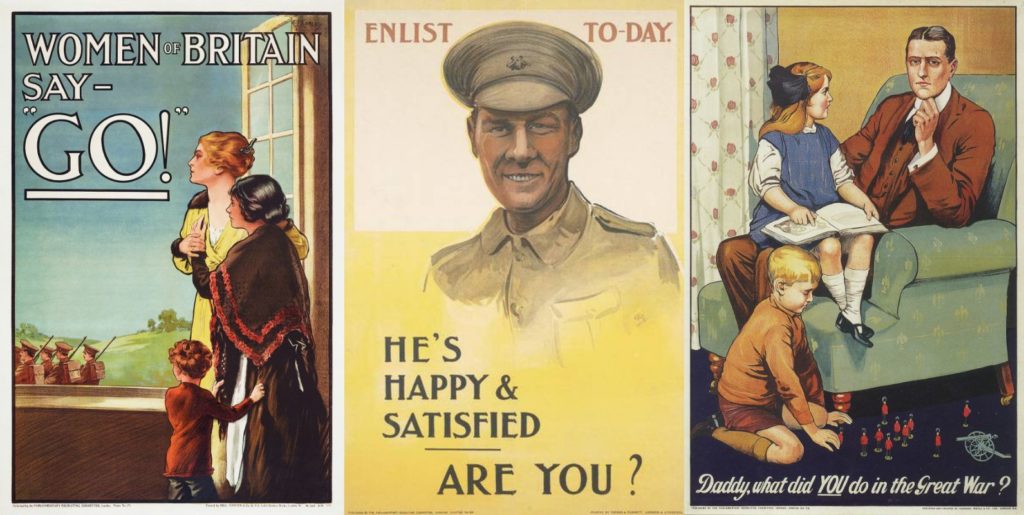"Tear Gas outside United States Capitol" by Tyler Merbler is licensed under CC BY 2.0
Violence and gun sales are at historic highs. Kyle Rittenhouse has a new shooting game marketed to kids. Josh Hawley — who fist pumped the insurrection and then fled in terror — is publishing a book on reclaiming "masculine virtue."
And Trump supporters are telling each other to "lock and load" for civil war following the FBI raid on Mar-a-Lago. "When does the shooting start?" asked one user in TheDonald, a pro-Trump forum used in planning the January 6 insurrection.
HOW THE HELL DID WE GET HERE???
We can’t look at recent events for the answers.
We can’t simply blame Trump or MAGA or The Proud Boys or the January 6 insurrectionists.
We must look at the historical patterns that brought us here, the long arc of shaping public opinion over decades and generations.
Part 1. Propaganda Begins
In 1928, Edward Bernays published the book Propaganda, which pointed to the success of mass media in World War I to not only shape, but manufacture public opinion, creating what he referred to as “the invisible government.”
“The minority has discovered a powerful help in influencing majorities...to mold the mind of the masses that they will throw their newly gained strength in the desired direction...this practice is inevitable…propaganda is the executive arm of the invisible government,” Bernays wrote.
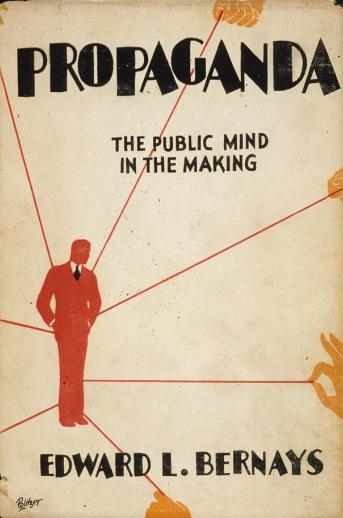
WWI was the first time a government used widespread, systematic mass media messaging to move its people and sway their opinions. (Before that, it was the church’s tool o’ choice. The word propaganda itself comes from the Catholic Church and means “to propagate the faith.”)
Of course, the USA wasn’t actually the first to the government propaganda game, just excellent copycats, per usual.
If you read my essay, How To Lose Friends & Alienate People, or listened to the podcast version, you know that in 1917, Woodrow Wilson appointed George Creel head of the Committee on Public Information or CPI (a fancy way of saying "Countrywide Propaganda Institute") and Creel simply copied British methods, supersizing them.
Yup, Uncle Sam’s finger in the face was a ripoff of Lord Kitchener’s, the British war minister whose face (and finger) covered the United Kingdom with the words, “Your country needs you.”
Kitchener had an important reason for appealing to people’s sense of duty through ads; Great Britain needed men to willingly volunteer for war because there was no mandatory draft. Kitchener had to move men to march to their death — 23% of British soldiers died in the war — and feel good about it, so more and more would continue to volunteer.
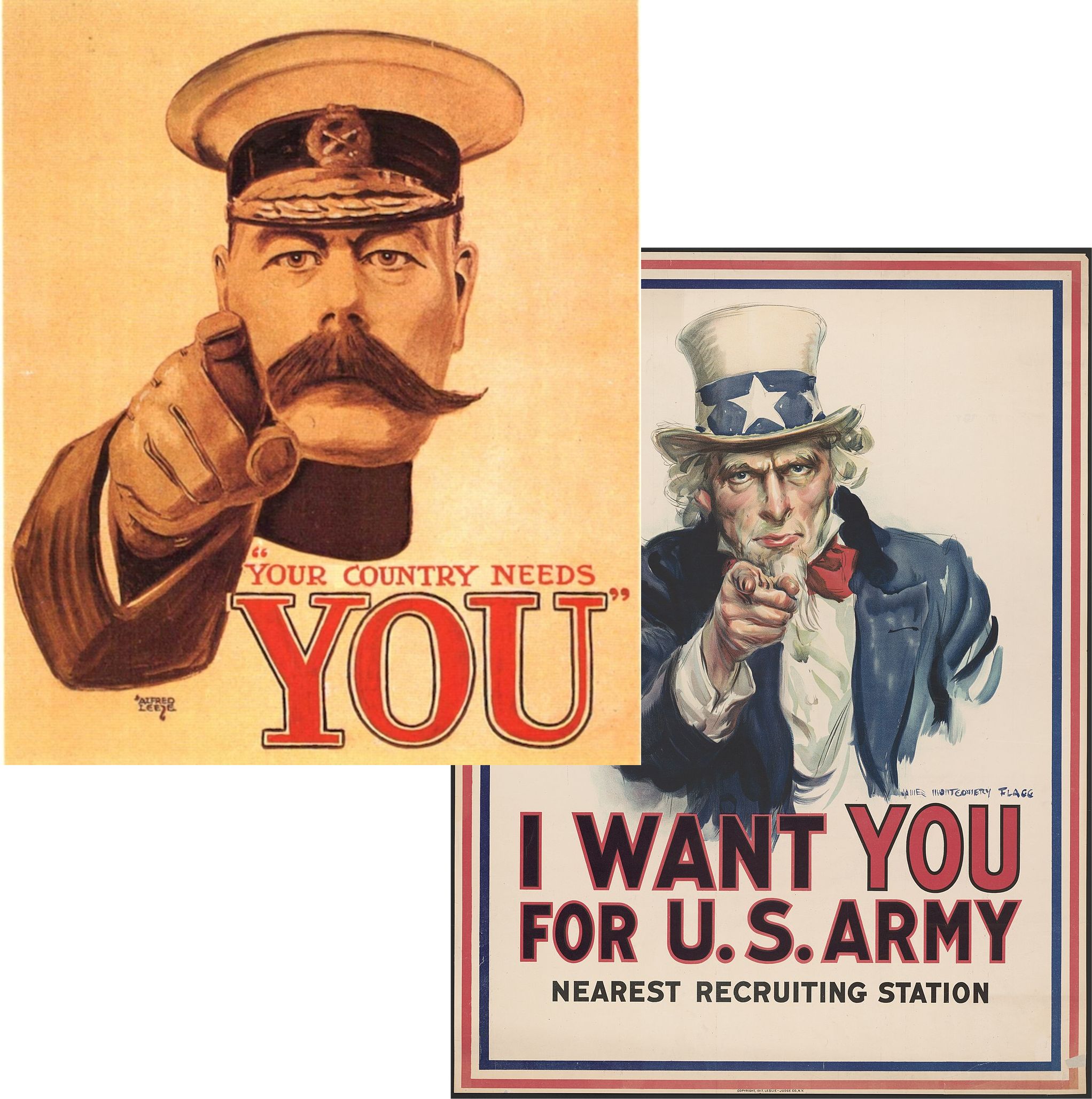
In addition to the infamous Kitchener finger, other British recruitment posters told men that war would make them “happy and satisfied” (or that not enlisting would embarrass their future children). Targeted ads spoke directly to wives and mothers — “Women of Britain, say “Go!” — with the concept that sending one’s husband or son to war was a woman’s way of expressing solidarity and patriotism.
This worked so well — even with hundreds of thousands of British casualties — that over in America, George Creel essentially copy pasted Kitchener’s plea onto Uncle Sam. And then he 10xed it.
The CPI used every method of communication to “fight for the minds of men” as Creel described it in How We Advertised America. This meant posters, pamphlets, radio shows, newspapers, books, movies, community events, school plays, and even an army of 75,000 volunteer speakers who delivered 7.5 million speeches over just 18 months.
The goal was to use all the different forms of communication to reiterate a consistent war message everywhere, until it took hold in the public mind as fact instead of persuasive spin.
The effect was that the CPI essentially rewrote history as it was being made.
The American propaganda machine tiptoed around restricting free speech outright by establishing “voluntary censorship” rules that news organizations “chose” to abide by when publishing news about the war. The CPI’s Division of News worked directly with journalists to approve what information went to press so the war message in every corner of the country was identical. In Words That Won The War, historians describe a typical Midwestern farm family:
“Every item of war news they saw — in the country weekly, in magazines, or in the city daily picked up occasionally in the general store — was not merely officially approved information but precisely the same kind that millions of their fellow citizens were getting at the same moment.”
This uniform message painted a rosy picture of noble, heroic, “civilized” Americans against the “mad brutes” of Germany, dehumanizing the enemy with posters that depicted Germans as drooling King Kong-esque apes.
The CPI manufactured and exaggerated stories of rape, murder, and torture to reinforce America as the defender of civility against the inhuman barbarism of the outside world.
In this way, while WWI may be the first time the United States government engaged in systematic propaganda, the message was consistent with its early founding and expansion.

This idea that America was a civilized, noble, heroic nation was used to justify the atrocities of slavery, colonization, and genocide.
The government had leveraged these themes of manifest destiny and civilization vs. barbarism so many times in the building of the nation that they felt familiar.
In the 1820s, Secretary of War Lewis Cass described the need for “Indian removal” in this way:
“A principle of progressive improvement seems almost inherent in human nature…We are all striving in the career of life to acquire riches of honor or power, or some other object, whose possession is to realize the day dreams of our imaginations; and the aggregate of these efforts constitutes the advance of society. But there is little of this in the constitution of our savages.”
A century later, white Americans had been trained to conflate killing the “savage” enemy with the pursuit of progress.
Nearly all news agencies followed the CPI’s “voluntary” censorship rules, many out of fear of inadvertently violating the 1917 Espionage Act, which pulled any newspaper publishing information that could be interpreted as interfering with recruitment or causing “insubordination, disloyalty, mutiny, or refusal of duty” in the army. (Now that it's Trump being investigated for violating The Espionage Act — a law historically used to silence and imprison left-wing political figures like Eugene Debs — suddenly conservatives like Rand Paul think it should be repealed. How convenient.)
The Sedition Act of 1918 codified censorship and formally restricted free speech by punishing any speech seen as “disloyal to the government” but was rarely enforced with newspapers because they chose this “voluntary” self-censorship instead.
The CPI also worked with advertisers in this way and the government published their own ads, too, so when Americans opened their newspapers each day, as today we open our phones, every single item on the page reiterated this uniform message. The news that went to print was patriotic and ultimately upbeat — presenting a sentimental, romantic view of the war as fact, with America a “selfless” hero.
Knowing this about our history gives a whole new flavor to the concept of “fake news.”
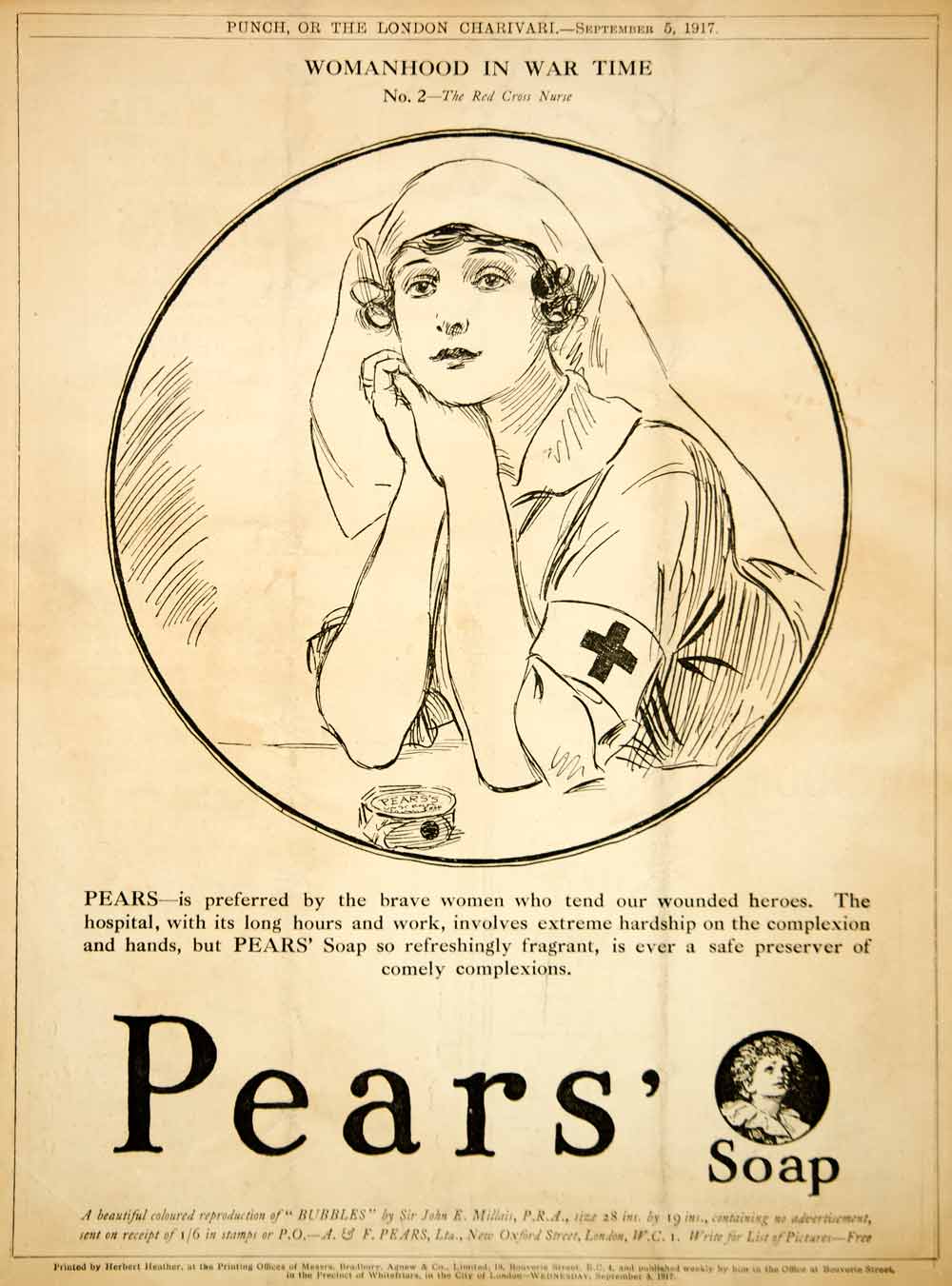
It’s important to note that the CPI didn’t pull this uniform message out of thin air, but leaned into the beliefs that many, but not all, Americans held at the time.
Propaganda is most effective when it builds upon existing ideas and prejudices and validates them, codifies them, and then works on filling in the gaps so that factions turn into masses.
The CPI was determined to gaslight any ambivalent Americans out of their “war jitters” by making its optimistic war message so pervasive that anyone left with doubts or concerns would question their own judgment.
George Creel describes this goal here in How We Advertised America:
“What we had to have was no mere surface unity, but a passionate belief in the justice of America’s cause that should weld the people of the United States into one white-hot mass instinct with fraternity, devotion, courage, and deathless determination. The war-will, the will-to-win of a democracy depends upon the degree to which one of all the people of that democracy can concentrate and consecrate body and soul and spirit in the supreme effort of service and sacrifice. What had to be driven home was that all business was the nation’s business, and every task a common task for a single purpose.”
The word “consecrate” here is particularly poignant, knowing that propaganda was originally a religious term. Creel never hid the fact that the CPI’s job was to stir the country into a religious zeal for war at all costs.
And, in many ways, it worked. 2 million men voluntarily enlisted. 8 million people volunteered with the Red Cross. 20 million people bought war bonds — raising more than $17 billion dollars, equivalent to about 6 trillion dollars in today’s currency. And, it left the country as a whole with a reinforced view of itself as a crusader for freedom. Yes, there were critics of how propaganda was used to “consecrate” the country in this way. But many were swallowed up by the totality of the CPI’s messaging or silenced by The Espionage and Sedition Acts.
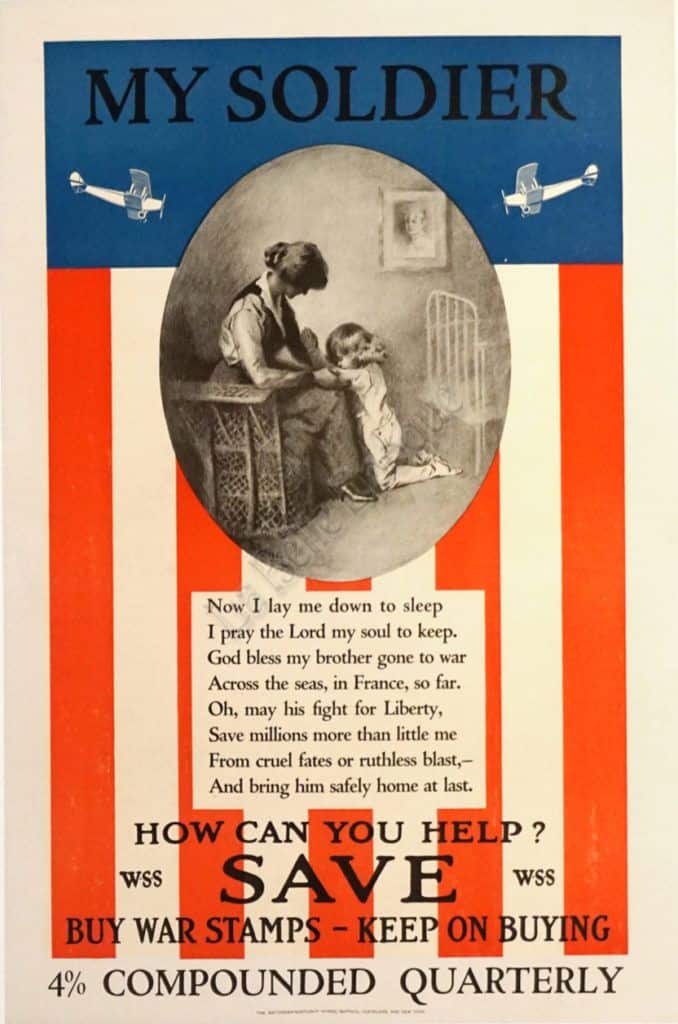
Looking back at Creel’s memoirs, which staunchly deny the CPI engaged in censorship or “fake news,” paired with Edward Bernays’ book, Propaganda, which came out eight years later, you could say both books are propaganda about propaganda.
Or in Bernays’ case, part of a public relations campaign to sway the public on the virtue of swaying the public — while strengthening his personal brand in the process.
Part 2. Public Relations Puts The "Truth" In Advertising
Bernays worked with the CPI in its Bureau of Latin-American Affairs and, after the war, parlayed his experience in changing people’s minds into the field of public relations, of which many consider him the “father.”
The success of WWI propaganda had far-reaching effects beyond the war itself — it legitimized the advertising industry as a whole.
It was not only the powerful in politics, but the powerful in business, who saw how effective a consistent and omnipresent message could be at making up peoples’ minds for them.
Before this time, advertising was largely seen as the hokum of hucksters. Patent medicines makers were the first to advertise their wares on a large scale, promising to cure every ailment from cancer to diabetes to problems people didn’t even know they had until a hyperbolic headline worried them into it.
The term “snake oil salesman” — which we know today as someone selling seedy goods — originated with the patent medicine mogul, Clark Stanley, self-styled “Rattlesnake King.”
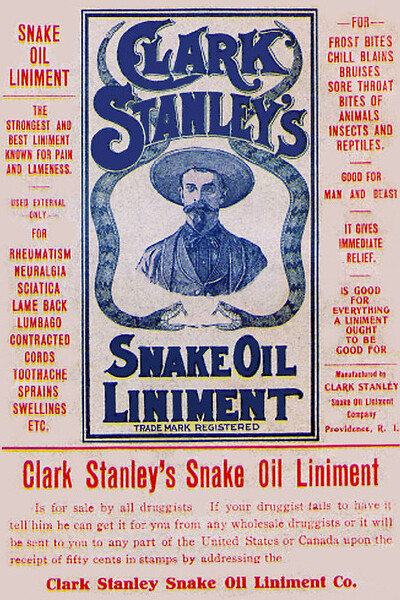
After Collier’s Weekly ran a series of articles in 1905, exposing the patent medicine industry as “The Great American Fraud,” the Food and Drug Act was passed in 1906, to curb the sale of products marketed with extravagant claims. It took another ten years, but the government eventually came after Stanley’s snake oil liniment and, upon testing, discovered that there was no actual snake oil in the snake oil — just beef fat, chili powder, and turpentine.
The tragedy of the “snake oil salesman” being synonymous with fraud is that Stanley appropriated snake oil from Chinese immigrants, who brought the ancient remedy with them and introduced it to American workers on the Transcontinental Railroad. The traditional remedy does contain actual snake oil from the Chinese water snake, rich in omega-3 fatty acids, proven to reduce inflammation, ease arthritis pain, and even improve cognitive function.
But, in white male tradition, Clark Stanley ruined its reputation and rewrote the story of snake oil, so he could get rich.
Had by too many headlines, the public grew to associate advertised goods with quackery, and many companies shied away from advertising as a result.
Then came the war. Wartime propaganda rehabilitated advertising’s reputation, both because CPI ads backed a product people already believed in — America — and because it proved advertising’s efficacy. WWI showed the world that if you repeat a consistent message enough times in enough places, people will eventually start to believe it.
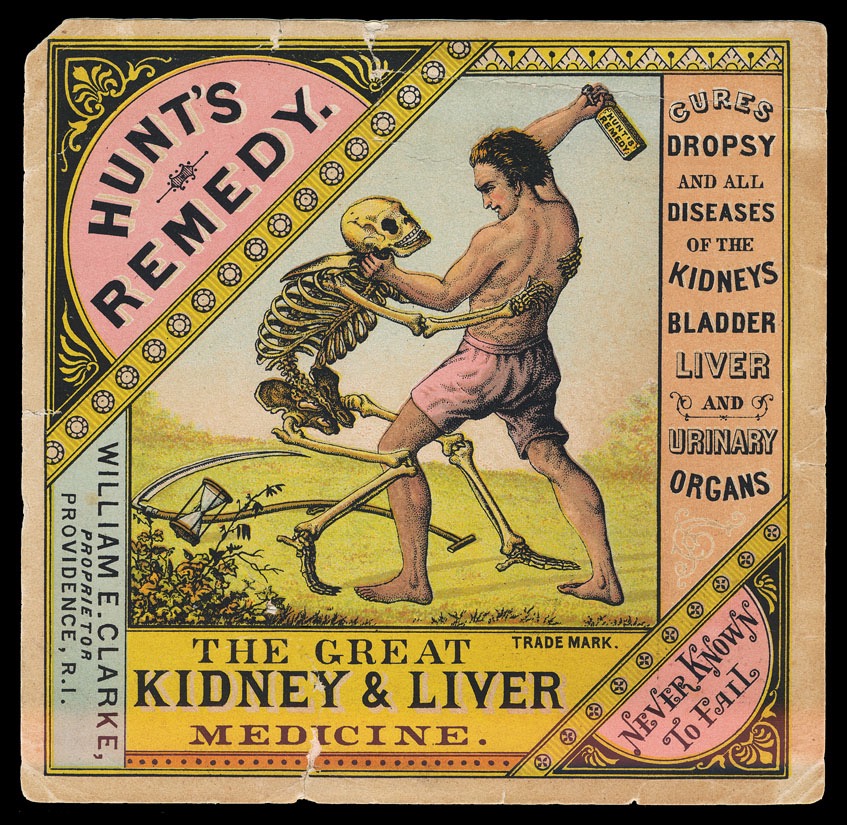
The crucial key to the CPI’s success was in expanding the traditional definition of advertising to include public relations.
The war paved the way for public relations to become a full fledged industry, demonstrating just how powerfully an advertising message can take hold in the public mind when paid media is paired with “earned media” — where a third party like the press or a prominent public figure echoes the message.
Public relations is often seen as distinct from advertising, when in reality, it’s an extension of it.
The public interprets traditional advertising messages with more skepticism, because they know an ad’s job is to sell. Public relations closes the gap by spreading an advertising message through the press and high profile people, who are seen as more trustworthy.
At a time where people had grown cynical about the veracity of advertised claims, public relations put the “truth” back in advertising.
Bernays ran with it. His books Crystallizing Public Opinion (1923) and Propaganda (1928) made the case for manufacturing public opinion, not simply for the sake of the government in times of war, but commerce, too.
Both books describe the masses as too stupid to know what’s good for them — the role of a public relations professional, in Bernays’ description, was to develop the “public conscience” and steer people towards products and ideas that the “intelligent minority” had pre-determined were in their collective best interest.
The public’s “best interest,” in this case, also happened to be his clients’ commercial and political interests.
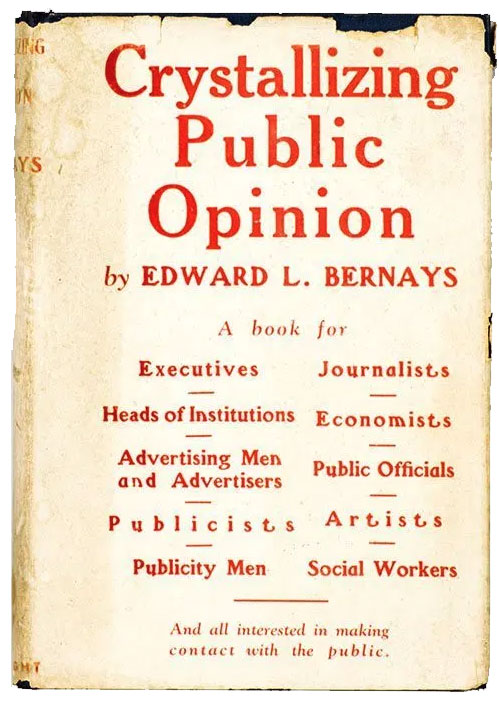
The nephew of Sigmund Freud, Bernays frequently cited Freud and other psychologists’ work in explaining how to use psychoanalysis and emotional techniques to control the human “herd.”
With language reminiscent of war, Bernays writes in Propaganda:
“The important thing is that [propaganda] is universal and continuous…its sum total regimenting the public mind every bit as much as an army regiments the bodies of its soldiers…small groups of persons can, and do, make the rest of us think what they please on a given subject.”
It’s important to note that, while Americans typically associate the disastrous effects of propaganda, not with Creel, Kitchener, or Bernays, but Hitler and Nazi Germany — Nazi propaganda was successful because America first showed Germany the way.
Joseph Goebbels, Hitler’s Minister for Public Enlightenment and Propaganda, studied Crystallizing Public Opinion “as a basis for his destructive campaign against the Jews of Germany,” Bernays recounts in his own biography. And the Nazi regime also studied and admired America's Jim Crow segregation laws.
While historians disagree about whether Goebbels also studied the CPI, Nazi propaganda followed the exact same methods that Creel and Bernays used in America — systematic and consistent mass media messaging, silencing dissenting voices, censoring the press, and turning German civilians into an “army” of the state.
Bernays, who was born in Austria to Jewish parents, knew that his teachings on molding the public mind were formative for Nazi propaganda, even before WWII broke out. He was informed that Goebbels studied his book at a dinner party with foreign correspondent Kurt von Wiegand in 1933.
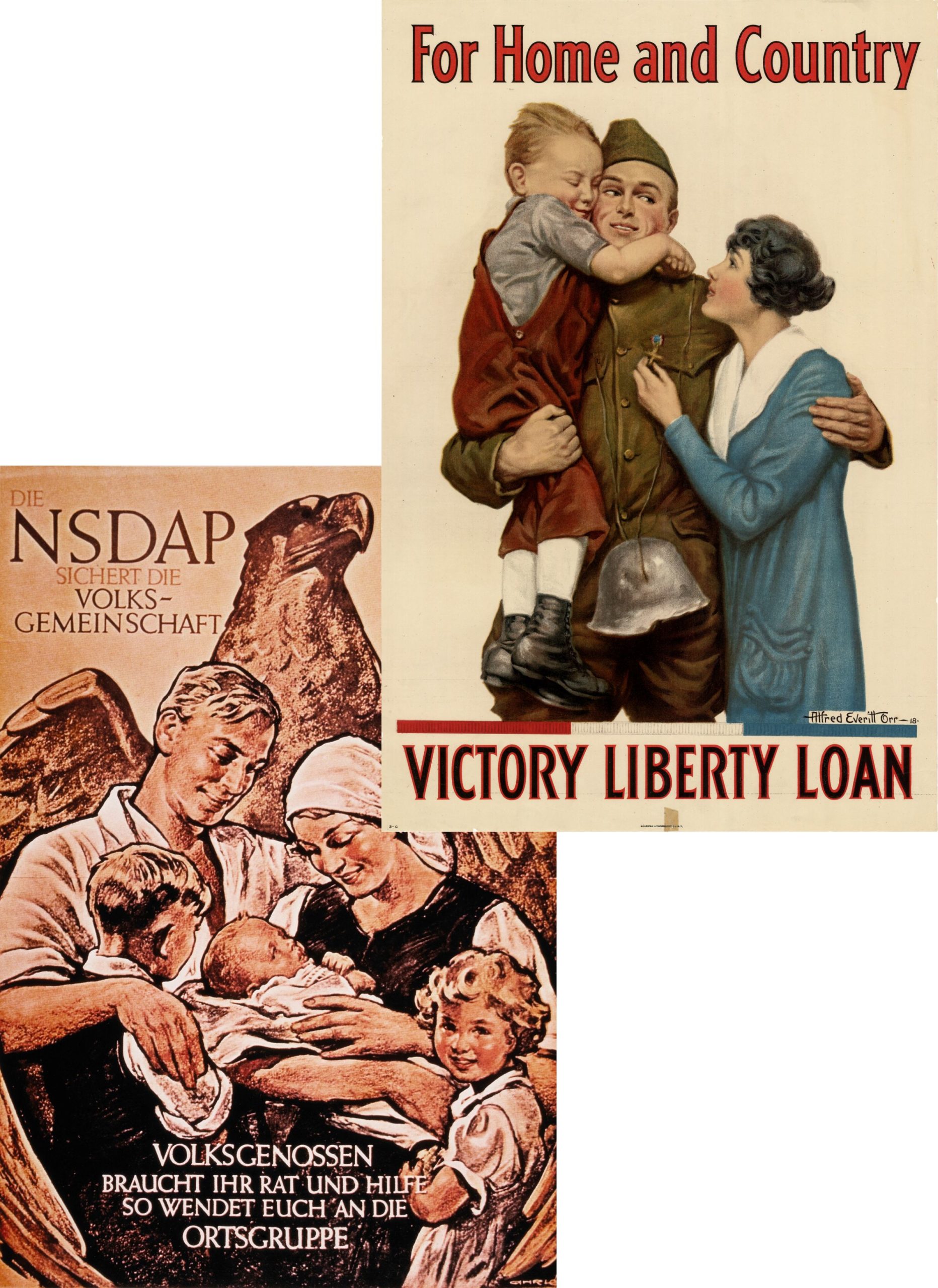
But Bernays didn’t reveal this knowledge until writing his 1965 biography, saying that it “shocked” him,
“...but I knew any human activity can be used for social purposes or misued for antisocial ones. Obviously the attack on the Jews of Germany was no emotional outburst of the Nazis, but a deliberate, planned campaign."
Two years after Bernays learned that Hitler was using his ideas on propaganda to build a cult of personality in Nazi Germany, Bernays continued to advocate for these exact methods, when giving a speech to the Financial Advertisers Association in 1935, saying:
"[The world needs] an entire new set of outstanding human living symbols that will hold public confidence…Publicists, economists, leaders in research, the heads of great educational institutions can and should be made the human symbols to bring new faith and strength.”
Writes historian Larry Tye in The Father of Spin: Edward L. Bernays & The Birth of Public Relations:
“Bernays was savvy enough not to retell the Goebbels tale in the 1930s and 1940s, when it could have tarnished his image, and to dwell instead on how his propaganda techniques had aided America in the two world wars.”
Bernays was more concerned with promoting his own brand and convincing big business of the usefulness of public relations for industry and commerce than the horrors that propaganda wrought.
And his retelling of how he learned that his ideas were being used to build the Nazi party, occupies only a page and a half of his 849 page biography, which focuses almost entirely of how he used propaganda to expand American capitalism.
(One of today's top marketers, Russell Brunson, founder of the popular ClickFunnels software, isn't as shy about connecting his brand to Hitler. Brunson wrote a whole book, Expert Secrets, about how he studied Nazi propaganda to learn how to build a cult movement of followers who will do anything you ask. Listen to Episode 11 for more on that.)
To fortify his personal brand as a hero of capitalism, Bernays includes this quote from Douglas Gilbert, writing about him in the New York World-Telegram in 1935:
“He has been called the Baron of Ballyhoo, a Barnum with a psychologist’s degree. Both are unjust. Mr. Bernays is a public relations counselor — in short, a propagandist; in full, a prophet to the people for the profit of his clients. As such, his career and exploits warrant recording, not alone for their contemporary interest but as a memoranda for prosperity. For Mr. Bernays is a symbol of what the capitalist system has achieved. Communism produces a Stalin; capitalism a Bernays. The man is a human holding company and it is unlikely that our present economic set-up with its debit-credit-debit can go— humanly— further. Reason totters at a super-Bernays.”

Would Gilbert have written this glowingly of Bernays had he known that his ideas were a favorite of the Nazis? It seems Bernays himself didn’t think so, because he hid his own knowledge of that for 32 years, tucking it at the back of his biography as an afterthought.
Bernays might have proven his thesis that propaganda was in the people’s best interest had he devoted his life to public health campaigns or social justice initiatives.
But, his body of work shows that Bernays primarily used the language of “public good” for the good of capitalism.
His goal was to sell — cigarettes, bacon, bananas, light bulbs, soap, hairnets, and ultimately, himself — the consumer society we now live in, where the public has been trained to see buying as an expression of political freedom is his greatest legacy.
Part 3. Corporate Propaganda and Politics Collide
We can see how Bernays used propaganda for both profit and politics simultaneously when he helped orchestrate the Guatemalan coup in 1954 to overthrow democratically elected president Jacobo Árbenz on behalf of his client, the United Fruit Company (now Chiquita), to protect company profits.
In his biography, Bernays describes the company:
“United Fruit was a way of life; the company was conducted like a private government. It had its own behavior patterns and loyalties. Individual lives were merged with the company’s life, for the company decided who was to live where, and how long. United Fruit employees in the tropics were thrown among other members of the company in all their activities. The company plantation in the jungle town was a settlement of American people, houses, and folkways…the native agricultural workers were treated as human machines rather than human beings and without regard to their folkways or culture patterns.”
Reading this horrifying description now, it’s hard to believe that Bernays thought this company deserved rescuing through public relations, but his book recounts how — despite seeing the ways United Fruit dehumanized its workers and bought up huge swathes of lands from farmers, forcing locals to become dependent on its corporate rule — he helped wage a decades-long war in Central America to secure United Fruit’s power and profits.

When Jacobo Árbenz took office, he began nationalizing the land controlled by United Fruit and returning it to the Guatemalan people. Bernays launched a public relations campaign to position Árbenz, not as a nationalist trying to secure his peoples’ ability to survive, but a communist under Soviet influence, who was working with the USSR to sabotage American capitalism and imperialism.
Thanks to Bernays’ relentless propaganda, he convinced President Dwight D. Eisenhower that Guatemala would soon fall to communist rule, which led to Operation PBSuccess. The CIA paid and trained Honduran militias to invade Guatemala and overthrow Árbenz.
The leader of the Honduran militia, Carlos Castillo Armas, replaced Árbenz and became the first in a series of military dictators that controlled Guatemala until the 1990s — all backed by the CIA. Armas returned the nationalized land to United Fruit and ensured that the American company received preferential treatment in Guatemalan commerce.

While Bernays left United Fruit in 1959, after the Cuban Revolution, saying, “I, too, became a casualty of this revolution” — an appallingly glib and self-involved statement in light of the many deaths his work wrought — his influence endured.
The CIA continued to fund both propaganda and paramilitary activity in Latin America for decades.
In Guatemala alone, it is estimated that over 100,000 civilians were murdered by military regimes between 1954 and 1990. More than 200,000 Guatemalans were killed in the Guatemalan Civil War, between 1960-1996 that happened as a result of Bernays’ campaigning on behalf of United Fruit. 40,000 of these people were “disappeared.”
The mass deaths in Guatemala are now classified as a genocide because military regimes targeted Mayan people in their killing. Victims, including small children, were beheaded, burned alive, and murdered with machetes.
Bernays never regretted his work for United Fruit.
Though he did publicly denounce his work promoting cigarettes and popularizing smoking amongst women. While he ultimately conceded that cigarettes were deadly, Bernays certainly lived long enough to see hundreds of thousands die in Guatemala thanks to his work, but he never considered capitalism toxic enough to decry.
Part 4. Social Media Propaganda & Corporate Rule in Times of Trump
These brutal, unconscionable moments in American history demonstrate just how intertwined marketing, propaganda, and government politics are.
In NO LOGO, Naomi Klein describes modern capitalism as “corporate rule,” where global corporations have more power and sway over our lives than individual governments.
United Fruit is just one example of this. Facebook is another.
Bringing this forward to the events of today — an FBI raid on Mar-a-Lago that has Trump supporters calling for civil war — to understand how we got here, we must see leaders like Trump and his devoted supporters as connected to what Bernays called the “continuous” cycle of generational propaganda. All meant to train each of us into “soldiers” of capitalism on behalf of what Bernays described in Propaganda as the “intelligent minority.” Translation: the rich elite.
While United Fruit exemplifies corporate rule in how it employed propaganda through traditional advertising and public relations to influence global politics for its own company profits, Facebook is a more complex and disturbing example of corporate rule because it is an advertising and public relations medium in and of itself.
The rebranded Meta may be a self-described “technology” company but it’s really in the business of collecting and analyzing people. Meta’s customers aren’t its users, but the corporations and businesses that advertise on its platforms.
This means anyone who uses Facebook, Instagram, or WhatsApp is the “product.”

Our attention is sold to advertisers. And it’s a lot of attention. There are 2.936 billion active Facebook users today, 1.452 billion on Instagram, and 2 billion on WhatsApp. 77% of Internet users use at least one Meta platform. This makes Meta the most influential media platform in the history of the world.
There is nothing new about media companies selling our attention.
Newspapers, magazines, radio stations, and TV networks have nearly always made their money by giving advertisers access to their audiences. Early newspapers tried to make money just selling the news to readers themselves but the cost was so prohibitive that readership was small and publishers could barely stay afloat.
In 1833, when Benjamin Day started selling papers for a penny — instead of the 6 cents his competitors charged — the number of people reading the news ballooned, changing media forever. Advertising revenue made it possible for the penny press to survive and, ultimately, thrive. This same revenue model persists today.
What makes Benjamin Day different from Mark Zuckerberg is how little he knew about his readers compared to the vast amount of data Meta has on its nearly 3 billion users. Whereas Day sold advertisers the ability to share their message with many people at once, Zuckerberg sells advertisers the ability to share tailored messages to highly specific groups of people, even one at a time, if they choose.
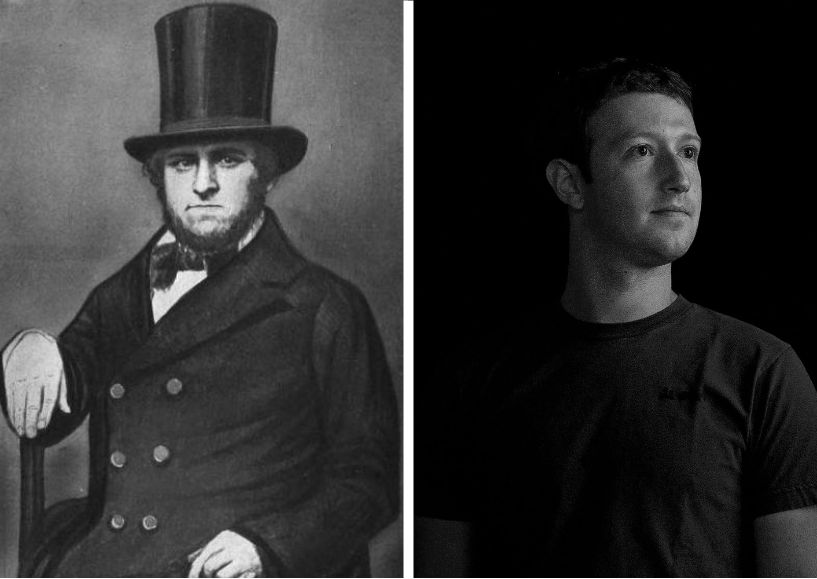
In 2017, Alexander Nix, then-CEO of Cambridge Analytica, deemed this media transition “From Mad Men to Math Men,” explaining how advertising was moving away from being a creative industry to a data-driven industry. He took to the online marketing speaking circuit to proclaim how communication as we knew it was dead and targeted technology was the new sheriff in town — using his work on the Trump campaign as his flagship example.
Whereas Bernays relied on broad and imprecise emotional appeals to the masses at large to achieve his propaganda and public relations goals, Nix and Cambridge Analytica customized their emotional appeals to small segments of the population, based on an in-depth understanding of their individual personalities and priorities, using the data they collected on Facebook.
Both Bernays and Nix used propaganda to steer the public in one specific direction and both employed psychology, behavioral science, and emotional manipulation to do it. But the former achieved his goals by repeating the same message everywhere. The latter achieved his goals by tailoring the message to everyone.
Today’s media consumer likes to think of itself as evolved, discerning, and “wise” to the advertiser’s tricks, compared to the folks reading WWI newspapers a century ago. But marketing and propaganda have evolved with us.
Social media has done for advertising what public relations once did.
Bernays understood that the public was wary of traditional advertising because they had been duped by too many snake oil salesmen.
Public relations helped advertisers and propagandists imbue their messages with more credibility by getting third parties like journalists, politicians, or prominent public figures to co-sign their claims.
Social media helps advertisers and propagandists imbue their messages with more credibility by getting us to co-sign their claims.
The Facebook data that Cambridge Analytica used to help Trump win the 2016 election didn’t simply offer a window into a user’s location, likes and dislikes, or behavior on the app, but their friends, too — even ones that aren’t Facebook users. Because when someone joins Facebook, they give it access to the contacts in their phone, which it can then use better understand people that don’t even use its platform.
This means, you might not use Facebook, but Facebook still uses your data, collecting it from your friends to improve its ad targeting. And you’re still likely seeing Facebook ads, too, because of the 80,000 apps on the Meta Audience Network.

The data Facebook collects on how people interact with their friends is used to algorithmically determine which content will not only resonate with someone, but will get the most engagement from their community.
“Users on social media are more willing to engage with information when it comes to them via their social networks, largely due to the fact that the social media feed is a self-curated collection of content,” write media researchers Kate Keib and Bartosz Wojdynski in a 2019 study published in Electronic News.
Likes, shares, and comments on a post affect how we interpret its credibility. We tend to pay closer attention to things our “friends” or contacts share. Facebook researchers want to please advertisers, so they have been studying this behavior closely to display content in the feed that is likely to garner more engagement, not just clicks.
Engagement boosts credibility and credibility, combined with repetition, converts — changing minds, selling products, yes, even electing politicians.
It’s easy to see Cambridge Analytica as “the bad guy” who’s now been caught and put away. The company dissolved. Facebook changed its privacy policies, increased scrutiny around political ads, and rebranded to Meta. Alexander Nix is banned from running or directing a company in the U.K. until 2027. Trump is now under FBI investigation.
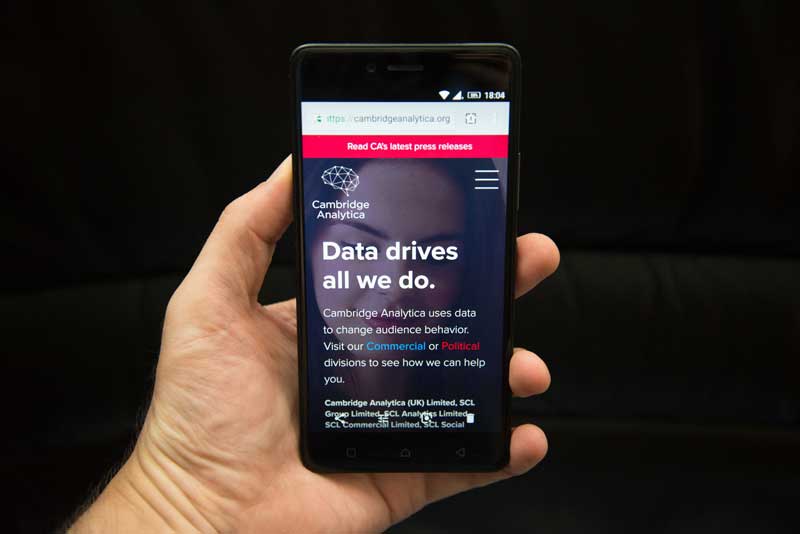
But the algorithms live on. And so does the MAGA army, which we can see today in their cries for civil war. The impact of Trump’s presidency reverberates violently across the country and the world.
Meta and the rest of Big Tech are still studying our behavior to learn how we make decisions and then selling our attention to advertisers. But it’s not just our attention, it’s their algorithmic ability to direct that attention, compelling us to buy or buy in. And those with the most money to spend will have the most sway.
This is what Naomi Klein meant in NO LOGO when she described “corporate rule,” where corporations have more power than individual governments. Corporations serve profits. Politicians serve corporate interests. People are served up to both as products. And propaganda serves to convince people that this is what we wanted all along.
We can’t separate commercial advertising from political propaganda because they work together.
WWI propaganda, which legitimized the advertising industry and paved the way for Mad Men and Math Men and Meta Men alike, ultimately sold more than the war. It sold the merits of American capitalism in and of itself. It sold corporate rule in red, white, and blue packaging. America became an international superpower, not simply because of its military prowess, but its global corporate influence.
And just like you don’t have to be on Facebook for your data to be used and exploited by Facebook, you don’t have to be American to be ruled by its corporations.
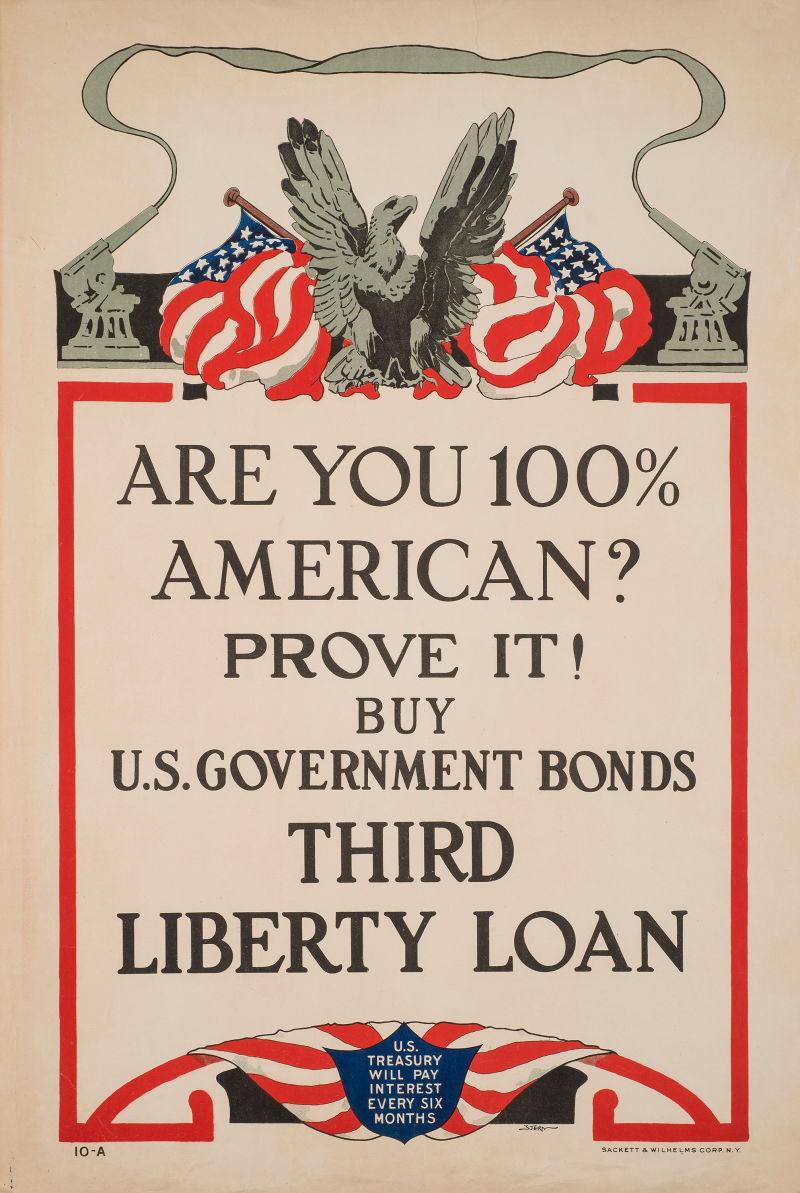
Just look at Guatemala, a country still grappling with the damage of 36 years of genocide and civil war, all thanks to corporate propaganda from United Fruit, now Chiquita, which is still the largest banana company in the world.
The United States has contributed more to climate change than any other country in world history, emitting over 400 billion metric tons of greenhouse gases since 1751. This pollution affects every country in the world’s access to fresh air, safe drinking water, and ability to secure food and shelter.
Apple is valued at $2.2 trillion, making it weathier than 96% of the world — if it was a country, it would be the world’s 8th wealthiest nation. Amazon would be 14.
At the 2017 Online Marketing Rockstars Festival, before the Cambridge Analytica scandal, when Alexander Nix was still bragging about how technology won the election for Trump, heralding how Math Men had replaced Mad Men, a panelist asked him:
“Are you happy, putting a misogynist buffoon into the highest, most powerful job in the world, who’s now fucking up our world? Are you happy?”

Nix responded like he was trained by Bernays himself:
“I think you need to step backwards a little bit and understand that, I don’t think it’s for people sitting in other countries to cast their opinions on the self-determination of the United States…if that’s the will of the people, I don’t think it’s anyone’s job in this room to go against that.”
The audience seemed to buy it. People applauded. Panelists nodded. The person with the mic shrugged, “Fair enough.”
Fair enough…for whom exactly? Nix’s answer suggests that America exists in a vacuum. That Trump’s presidency concerned no one but the people propagandized to put him in power. That American policies, trade agreements, and the corporate behemoths Trump worked tirelessly to deregulate don’t directly impact the entire global economy.
But what do I expect? The people nodding along with Nix at the Online Marketing Rockstars Festival were marketers. They went to the festival to study the Bernays of our day, to learn how to sway the public like an Apple, an Amazon, a Trump or a Zuckerberg.
The marketing industry was founded and fueled on the belief that capitalism ultimately serves the public good.
And that its casualties are tragic, but necessary sacrifices in the defense of our “freedom” to keep buying in. As Bernays instructed, the marketing business is the business of “regimenting the public mind every bit as much as an army regiments the bodies of its soldiers.”
When Trumpers call for civil war or marketing “rockstars” nod along with Nix, they reveal how well this training works.
“There are invisible rulers who control the destinies of millions,” Bernays wrote in 1928.
“The important thing for the statesman of our age is not so much to know how to please the public, but to know how to sway the public…the political leader must be a creator of circumstances.”
To borrow Nix’s language, we have indeed gone “From Mad Men to Math Men.” Only the invisible rulers — the “intelligent minority” Bernays spoke of nearly a century ago, are now artificially intelligent.
The state is a global corporatocracy. And we are its body of soldiers and, ultimately, its casualties.
Sources include:
- The Attention Merchants: The Epic Scramble to Get Inside Our Heads, Tim Wu
- A People's History of the United States, Howard Zinn
- How We Advertised America: The First Telling of the Amazing Story of the Committee on Public Information That Carried the Gospel of Americanism to Every Corner of the Globe, George Creel
- Secrets of Victory: The Office of Censorship and the American Press and Radio in World War II, Michael S. Sweeney
- Words That Won the War: The Story of the Committee on Public Information, 1917-1919, James Robert Mock and Cedric Larson
- Selling the Great War: The Making of American Propaganda, Alan Axelrod
- Biography of an Idea: Memoirs of Public Relations Counsel, Edward Bernays
- Propaganda, Edward Bernays
- Crystallizing Public Opinion, Edward Bernays
- The Father of Spin: Edward L. Bernays & The Birth of Public Relations, Larry Tye
- "The Original Spin Doctor", Paul Farhi, The Washington Post
- "Snake Oil Salesmen Were Onto Something", Cynthia Graber, Scientific American
- "Facebook: How Likes and Followers Affect User Perception and Leadership", Troy Johnston MA
p.s. Sick of business newsletters that have all The Answers™? Well, I've got nothing but questions. For more marketing muckraking and brand strategy gone wild, sign up for my emails here:
If you liked this, read on:
In many ways, it seems easier to become a “personal brand” version of yourself than to be yourself. Brands are built on simplicity. A “good”…
Read More...Rebrand TOO MUCH to SO MUCH. Instead of saying, “She’s TOO MUCH,” say, “She’s SO MUCH.” You’re welcome. Lessons on burning it all down…
Read More...In 2021, I started a business / art experiment called FREE SCHOOL. I didn’t know at the time that this school would teach me to free myself. What happens after you burn it all down?
Read More...